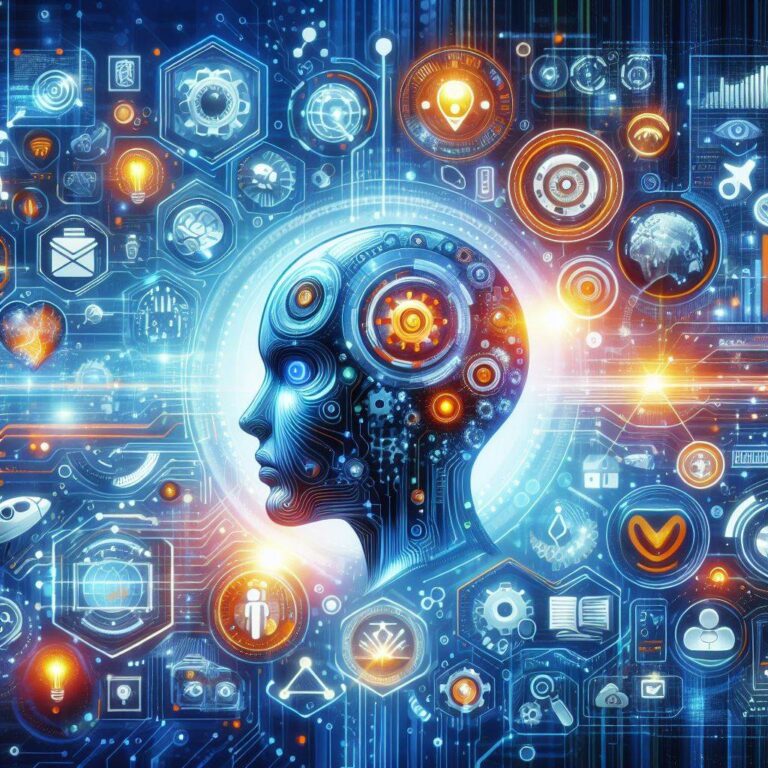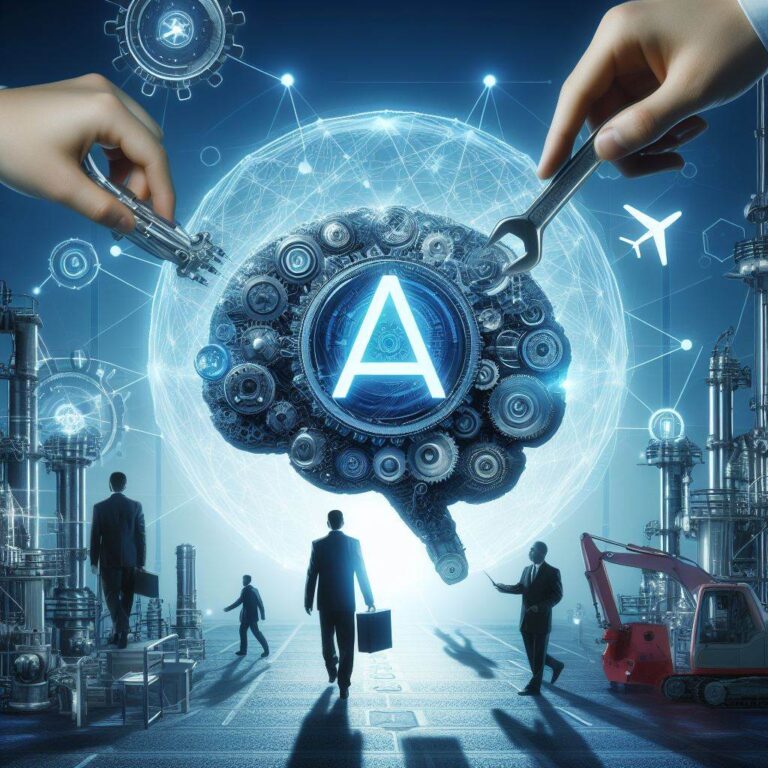Introduction to Natural Language Processing (NLP) is an exciting journey into the field of artificial intelligence and language understanding.
In today’s digital age, where large amounts of text data are generated every second, NLP plays a vital role in revealing valuable insights and automating other tasks.
together.
In this blog post, we will delve deeper into the fundamentals of NLP, exploring its key concepts, techniques, and applications.
Whether you are a seasoned data scientist or a curious beginner, join us to unravel the mysteries of natural language processing and explore its vast potential to transform the way we interact with data and technology.
Exploring the Fundamentals of Natural Language Processing (NLP)
Natural language processing (NLP) is a subset of artificial intelligence (AI) that aims to enable computers to understand, interpret, and generate human language.
It includes a variety of techniques and algorithms for processing and analyzing natural language data, such as text and speech.
NLP has gained popularity in recent years due to its various applications in various industries, including healthcare, finance, customer service, and more.
One of the main goals of NLP is to bridge the gap between human language and computer understanding, by enabling machines to extract meaningful information from unstructured text data .
By leveraging computational techniques, NLP enables machines to perform tasks such as sentiment analysis, language translation, text summarization, and entity recognition.
These capabilities have revolutionized the way businesses interact with and derive value from large volumes of textual information.
NLP techniques rely on a combination of linguistics, computer science, and machine learning to effectively process and analyze natural language data.
Some common techniques include tokenization, part-of-speech tagging, named entity recognition, parsing, and semantic analysis.
These techniques provide the foundations for developing complex NLP applications capable of understanding and generating human-like responses.
Despite its progress, NLP still faces a number of challenges, including ambiguity, data scarcity, and domain specificity.
Natural language is inherently complex and nuanced, making it difficult for machines to accurately interpret the intended meaning behind words or phrases.
Additionally, NLP models require large amounts of annotated data for training, which is not always available or easily applicable in different domains.
Despite these challenges, ongoing research and innovation in the field of NLP continues to push the boundaries of what is possible, leading to the development of advanced and capable language processing systems.
NLP Techniques and Algorithms
Natural language processing (NLP) encompasses a variety of techniques and algorithms designed to analyze and understand human language.
These techniques allow machines to process unstructured text data and derive meaningful information from it.
Some popular NLP techniques include tokenization, which involves breaking text into smaller units such as words or sentences, and part-of-speech tagging, which identifies grammatical parts of speech (e.g.
: noun, verb) in a sentence.
Additionally, named entity recognition is used to identify and classify named entities such as people, organizations, and places mentioned in the text.
Another important NLP technique is syntactic analysis, which involves analyzing the grammatical structure of sentences to understand their syntactic relationships.
This technique helps machines understand the hierarchical structure of language and how different words and phrases relate to each other in a sentence.
Semantic analysis is another important aspect of NLP, focusing on extracting meaning and context from text data.
Semantic analysis techniques enable machines to understand the intended meanings behind words and sentences, allowing for more accurate language processing and interpretation.
Machine learning algorithms play an important role in NLP because they enable machines to learn patterns and relationships from large amounts of text data.
Supervised learning algorithms, such as support vector machines and neural networks, are commonly used for tasks such as sentiment analysis and text classification.
Unsupervised learning algorithms, such as clustering and topic modeling, are used for tasks such as document clustering and topic extraction.Additionally, deep learning techniques, such as recurrent neural networks and transformers, have shown significant success in various NLP tasks, including language translation, text generation, and question-answering.
ask. Overall, NLP techniques and algorithms continue to evolve, leading to advances in language understanding and communication technology.
Tools and Libraries for NLP
There are many tools and libraries available for natural language processing (NLP) that facilitate the development and deployment of NLP models and applications.
One of the most popular libraries for NLP is NLTK (Natural Language Toolkit), which is a comprehensive library written in Python.
NLTK supports various NLP tasks, including tokenization, part-of-speech tagging, parsing, and named entity recognition.
It also provides a range of vocabulary and corpus resources for NLP research and testing.
Another widely used NLP library is spaCy, known for its effectiveness and ease of use.
SpaCy is written in Python and provides pre-trained models for various NLP tasks, making it suitable for both beginners and experienced developers.
It supports tokenization, part-of-speech tagging, named entity recognition, dependency analysis, and more.
SpaCy also provides customizable pipelines and integrates with deep learning frameworks like TensorFlow and PyTorch, allowing developers to build and deploy advanced NLP models.
For deep learning-based NLP tasks, libraries such as TensorFlow and PyTorch are commonly used.
These libraries provide high-level APIs and pre-trained models for tasks such as language modeling, text classification, sequence labeling, and machine translation.
They also provide support for creating custom neural network architectures for NLP tasks, allowing developers to experiment with different model architectures and training techniques.
Additionally, specialized libraries such as Transformers provide pre-trained models based on Transformers, such as BERT and GPT, which have achieved state-of-the-art performance in various NLP tests.
These libraries provide easy-to-use interfaces to fine-tune and deploy transformer models for specific NLP tasks.
Conclusion
In summary, Natural Language Processing (NLP) is a rapidly growing field that has enormous potential for various applications across industries.
From sentiment analysis and chatbots to machine translation and text summarization, NLP techniques and algorithms are changing the way we interact with and analyze text data.
With the availability of powerful tools and libraries like NLTK, spaCy, TensorFlow, and PyTorch, developers have access to many resources to build complex NLP models and applications.
As advances in NLP continue to accelerate, we can expect to see even more innovative applications emerge, further enhancing our ability to understand, process, and learn from human language.
Whether you are a seasoned NLP practitioner or just starting, there has never been a better time to explore the fascinating world of natural language processing.
- Python, offering various tools and resources for NLP tasks.
- spaCy: Learn about spaCy, a popular NLP library known for its effectiveness and ease of use, providing pre-trained models and customizable pipelines for NLP tasks.
- TensorFlow: Discover TensorFlow, a powerful deep learning framework commonly used for NLP tasks, offering high-level APIs and pre-trained models for text processing.
- PyTorch: Explore PyTorch, another popular deep learning framework for NLP, known for its flexibility and ease of use in building custom neural network architectures.
- Transformers: Learn about Transformers, a library providing state-of-the-art pre-trained models like BERT and GPT, which have revolutionized NLP tasks.
- Introduction to NLP – Coursera: Enroll in this Coursera course to deepen your understanding of Natural Language Processing and its applications in various domains.






























